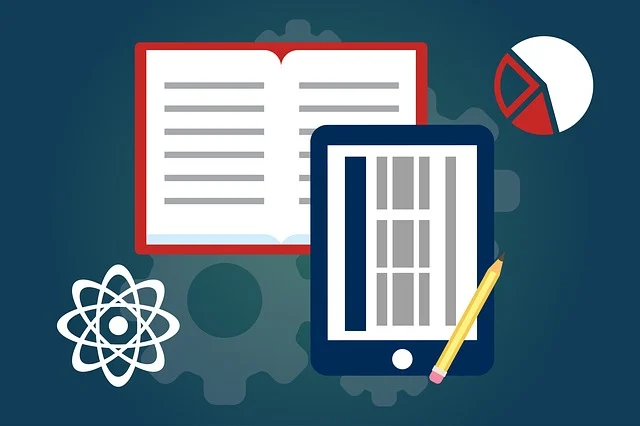5 Outstanding ADDIE Model For Instructional Design

The ADDIE model for Instructional Design (ID) method has been utilized for several years as a foundation for creating educational and training programs by both educators and instructional designers. Analyze, Design, Develop, Implement, and Evaluate is referred to as “ADDIE.”
However, the order in which the stages are performed does not require a strict linear progression. This technique is particularly helpful to educators, instructional designers, and training developers since having clearly defined stages makes it easier to use efficient training solutions. The Addie Model has gained widespread acceptance and use as an ID model.
The 1950s are when the idea of instructional design first emerged. ADDIE wasn’t created until 1975, though. The Florida State University Center for Educational Technology initially created ADDIE for the U.S. Army before rolling it out to all other U.S. Armed Forces branches.
The Five Step Approach, an earlier ID model created by the U.S. Air Force, served as the foundation for the ADDIE paradigm. This five-step structure was maintained in the ADDIE model, which also had numerous smaller phases within each of the five major phases. One had to carry out the process in a linear fashion, finishing one phase before beginning the next, due to the steps’ hierarchical nature.
Practitioners have modified the steps of the initial hierarchical version multiple times throughout the years. The model is much more dynamic and interactive as a result. The variant that is comparable to the current version first appeared in the middle of the 1980s. The ADDIE approach still has an impact on the majority of ID models used today.
ADDIE Instructional Design Models
The Addie instructional design model’s five elements and they are as follows:
Analysis
The “Goal-Setting Stage” could be referred to as the analysis phase. The target audience is the designer’s primary concern during this stage. The program also does a good job of taking each student’s ability and intelligence into account. This will prevent them from being taught what they already know, and the emphasis will instead be on subjects and lessons that they haven’t yet had a chance to explore and understand. Instructors make a distinction between what students already know and what they should know after finishing the course during this phase.
To ensure full analysis, a few crucial elements must be used. Syllabi, online resources, and course materials are to be used. The framework of the syllabus can be established with the use of internet resources like web courses. An instructional analysis will be done at the program’s conclusion to decide which themes or topics should be covered. In general, the analysis phase addresses the following problems and queries:
- What is the normal background of the program’s participants and students? Age, nationality, prior experiences, and interests are examples of personal and educational information that should be determined. Who is the intended audience? What are the students’ learning objectives, prior knowledge levels, experiences, ages, hobbies, cultural backgrounds, etc.?
- What must the students complete in order to graduate from the course of study? What needs does the learner have?
- What attributes—skills, intelligence, attitude, and physical/psychological action-reaction—will be necessary? Which learning outcomes—knowledge, skills, attitudes, behavior, etc.—are desired?
identifying the most widely-used techniques in the area and examining what needs to be developed and improved. Review of the current educational techniques used. Are they sufficient? What needs to be changed, clarified, or improved? Identifying the project’s target objectives. What educational objectives does the project prioritize? - Identifying the numerous learning environment options that are available. What kind of setting is most favorable to learning? a mix of online and live discussions?
- What advantages and disadvantages do classroom-based study and internet learning have? Which method of delivery is to be chosen? What kind of setting is preferred for learning? Does one choose online, in-person, or a combination of the two?
- What will the differences in learning outcomes between classroom-based learning and web-based learning be if online is preferred?
- Identifying obstacles to the project’s overarching objective. What constraints on resources, such as technical, support, time, human resources, technical skills, financial, and support constraints exist?
Design
We review all the data from the Analysis phase during the Design step in order to create the learning program with knowledge. Be mindful that this process frequently takes a lot of time and calls for meticulousness.
Specific learning goals, the way the content is organized, the mental processes that participants must utilize, the knowledge or skills that participants must retain, the best tools to employ, the creation of videos or images, and the duration of each session are all decided during the design phase. Just a few basic requirements. Simply put, this is where your skills as an instructional designer really shine.
Building a storyboard, or plan, of our entire eLearning course is advised by the ADDIE model. The purpose of storyboards is to aid the designer and other stakeholders in visualizing major concepts. They can also hasten the process of development. Although storyboarding can be useful, many projects don’t have enough time for such specifics.
Development
The Development phase is where you actually begin producing or developing, your eLearning course.
The content concepts should have been chosen during the prior Design process. It’s your responsibility to give those content ideas life during the development period. To accomplish this, the content must be organized graphically, visuals must be made, videos must be made, fonts and colors must be carefully chosen, and the course must be built using an eLearning authoring tool. Anything that has to do with developing the real end-product for your learners.
Testing is a significant aspect of the development phase. If one of the slides prevents people from moving further, you don’t want to create a complete course, submit it to an LMS, and distribute it to thousands of employees. Or the test outcomes aren’t being saved. Make sure your stakeholders are involved in a testing and review procedure that has been developed. To spot any mistakes that slip through the cracks, you’ll want to have a couple different sets of eyes review it.
Implementation
The program is continuously modified during the implementation stage to ensure optimal effectiveness and successful outcomes. Here, IDs work to revamp, modernize, and revise the course to make sure it can be efficiently presented. The operative term here is “procedure.” Here, IDs and students collaborate closely to learn new techniques so that the design can be regularly assessed for potential improvement. No project should be allowed to finish without adequate ID review and in isolation. Since this stage receives a lot of feedback from IDs and players alike, a lot can be discovered and fixed.
The implementation phase includes a design evaluation. Designers take a very active part in this phase, which is essential for the project’s success. To ensure effective product delivery, developers should continuously assess, redesign, and upgrade the product. Careful observation is necessary. In this phase, the product, course, or program is properly evaluated and any necessary and timely revisions are made. Instantaneous changes to the project can be made when instructors and students actively participate in the implementation process. This increases the program’s effectiveness and success.
Examples of what can be determined include the following:
- Share your chosen method for keeping records and the specific information you plan to glean from how students interact with the project.
- What emotional reaction did teachers and students provide you during the project’s initial presentation? Do they exhibit real curiosity, zeal, skepticism, or resistance?
- Do you observe that IDs are able to understand the issue right away or do they require assistance as the project progresses?
- Describe your plan for handling any potential mistakes that may occur during testing. What will you do if things don’t go as planned after giving kids their activities?
- Did you have a backup plan in place in case the project failed at the start? Do you have a backup plan in place for when technical issues and other issues arise?
- Which type of implementation—on a small or large scale—will you choose?
- When the student group receives the material, can they work without constant supervision, or not?
Evaluation
Evaluation is the ADDIE Model’s last stage. After the eLearning course has been planned, created, and put into use, you need make sure it is effective. Is the program successful? Are your students perplexed? Gathering crucial data is the main goal of the evaluation phase, which determines whether or not the course has to be altered and enhanced.
This data can be obtained by looking at the LMS’s back-end data. additionally requesting survey responses from users after they have finished the course. The ADDIE model’s ability to be applied as a continuous cycle makes it special. For instance, during the last round of evaluation, you collect input. Place it back in the Analysis phase at that point to begin a brand-new iteration of your final product. Really cool.
Read on: SAM Instructional Design Model | 3 Phases of Successive Approximation Model
Benefits and Drawbacks of ADDIE
Benefits of ADDIE
- It generally recognized and in use model
- It has proved to be efficient for teaching humans
- It is a base for additional learning models
- It is simple to gauge time and expense
ADDIE’s drawbacks include:
- It strict, sequential process that must be followed
- It is both costly and time-consuming
- It is incapable of bending to unanticipated project adjustments
- It is incompatible with iterative design
Conclusion
One of the most often applied learning models is ADDIE. It is significant because it offers a tested technique for creating effective training programs. Mastery of ADDIE is a regular requirement on job descriptions for instructional design positions.






